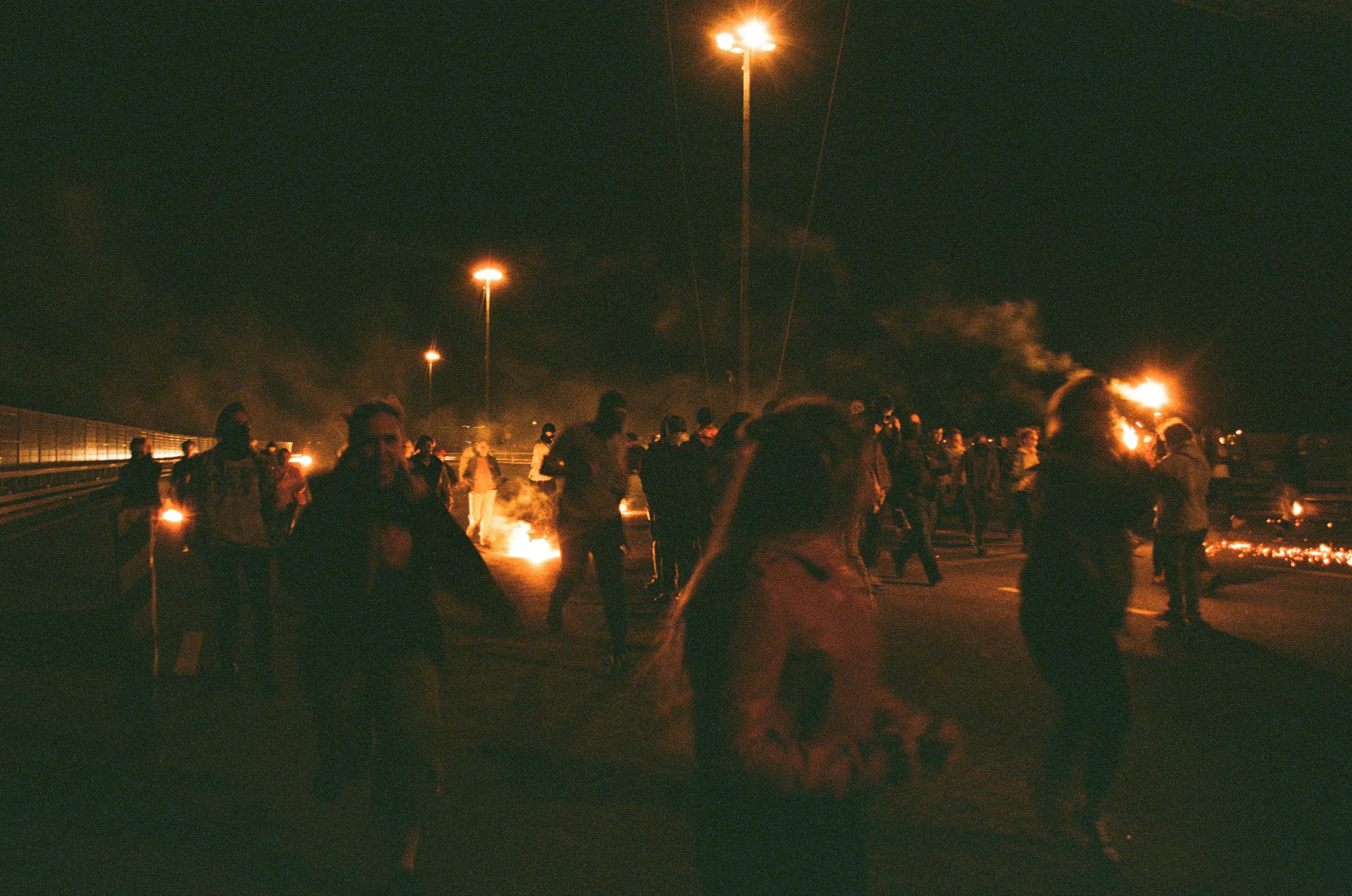Two parties, one machine
And the path toward radicalization.
News cycles love the ritual: scold the protestors for “bringing politics” into climate marches, then act shocked when a placard about war, racism, or colonialism appears next to one about CO₂. The demand is always the same: keep it neat, keep it polite, keep it single-issue. That demand is absurd.
The liberal-conservative mind (two faces of the same coin) wants a world where problems arrive one at a time, pre-sorted, solvable by a petition, a grant, and a photo-op. The real world refuses.
Single-issue activism is dead (it never lived)
How can the destruction of ecosystems be anything but political? How could climate collapse, the rise of authoritarianism, wars, surveillance, plastic in bloodstreams, spiraling cancers, racist policing, and mass depression not share roots? They do: a growth-addicted economy, imperial extraction, private power shielded by state force, and a culture that treats living beings as inputs.
Mark Fisher called it: most feel-good, single-issue activism functions as capitalist realism—a therapy ritual for the anxious soul and the comfortable onlooker. “Someone’s doing something; I can relax.” The police-sanctioned march that apologizes for inconvenience embodies this. It attempts to negotiate with a cancer.
Why should the cancer listen to reason?
There are no single issues
We won’t solve climate breakdown by swapping engines and keeping everything else the same. The rebound effect (Jevons paradox), the growth mandate, and an oligarchy addicted to extraction swallow efficiency whole. Techno-hopium promises salvation without sacrifice; the math says otherwise. Greed is not a glitch—it’s the operating principle.
The liberal-conservative consensus
Call it a consensus because, where it matters, both camps defend the same house.
Single-issuism: Treat symptoms as separate and manageable; ignore the system producing them.
Status-quo reformism: Tinker at the edges while keeping capital sacrosanct. “Innovation will save us.”
Order before truth: Protests curated in partnership with the very forces protecting the system. Step out of line and the permit evaporates.
Monopoly on reason (and violence): What contradicts respectable ideology is mocked as irrational—until the state’s batons arrive to define “reason.”
Mutual contempt as self-flattery: Liberals call conservatives dumb; conservatives call liberals decadent; both evade the deeper critique that implicates them equally.
“Aren’t they opposites?”
On lifestyle and symbols, sure. On property, empire, and hierarchy, not really. The liberal champions civil liberties—until empire says they’re inconvenient. The conservative blames those liberties for his emptiness. Both ultimately sell stability to capital. The culture war is a decoy flare to keep the working class divided and busy.
Lenin’s line still stings: fascism is capitalism in decay. Decay thrives when a society can no longer imagine life beyond profit.
How disillusionment actually happens
Many of us start as true believers in the polite story: vote, donate, recycle, upgrade, progress. Then—after a few election cycles and a few “historic” bills—nothing essential changes. Forests fall, seas warm, rents soar, wars grind on, and the future narrows. The vibe curdles into that boring, medicated dystopia we pretend is normal.
So you read—real analysis, not timelines. Anti-capitalist theory, anarchism, communism, existential philosophy—anything that names the thing. “Radicalization” is often just clarity with better language. “Radical” is relative: what sounds extreme in talk shows reads like common sense when your town floods.
At that fork, people drift either toward mutual aid and democracy without billionaires—or toward hierarchy, purity, and violence. One builds; the other breaks.
Beyond personalities
Charismatic figures can catalyze, sure. But celebrity politics is a cul-de-sac. Durable change needs networks, not idols: unions that bite, community defense, strike funds, rent assemblies, climate blocs that refuse police choreography, and movements that are hard to buy and harder to ban. Leaders emerge, then get rotated out. No thrones.
What now?
Things are getting worse. That means the center will insist on more decorum while offering less life. The working class will be courted by two futures: a disciplined, solidaristic one that promises material security and dignity—or an authoritarian one that offers enemies and spectacle. The choice won’t be made on social media but in housing offices, on picket lines, and at blockades that actually cost the machine something.
If collapse is a process we’re already in, then the task isn’t to “save” the old order but to seed what outlives it: decommodified basics, public luxury and private sufficiency, shorter work, slower throughput, repair over churn, borders that don’t decide who eats, and institutions that can say no to profit.
The single-issue lens can’t see that horizon. Liberalism and conservatism won’t deliver it. People will—if they stop negotiating with the cancer and start removing it.
Antonio Melonio
If you don’t want to support me on Substack, you can also help sustain my work on Patreon or with a one-time donation.
Thank you.



Thanks for this Antonio. The difference between the liberal left and the radical left is going to become more and more important as we get into this century.
I also appreciate the way your looking for the revolutionary hope in a figure like Greta rather than focussing on all the ways her celebrity is flawed. I feel moved by the possibility that she and the generation she has been plucked in front of are really connecting with the reality of this situation.
It will be interesting to see if Ms. Greta will be the 'One' as the western world certainly needs someone like her to rally around. The bigger question will be, will the older generations let her live long enough to make a difference? Young people like her have a way of encountering resistance from powerful sources with money enough to buy "solutions'.